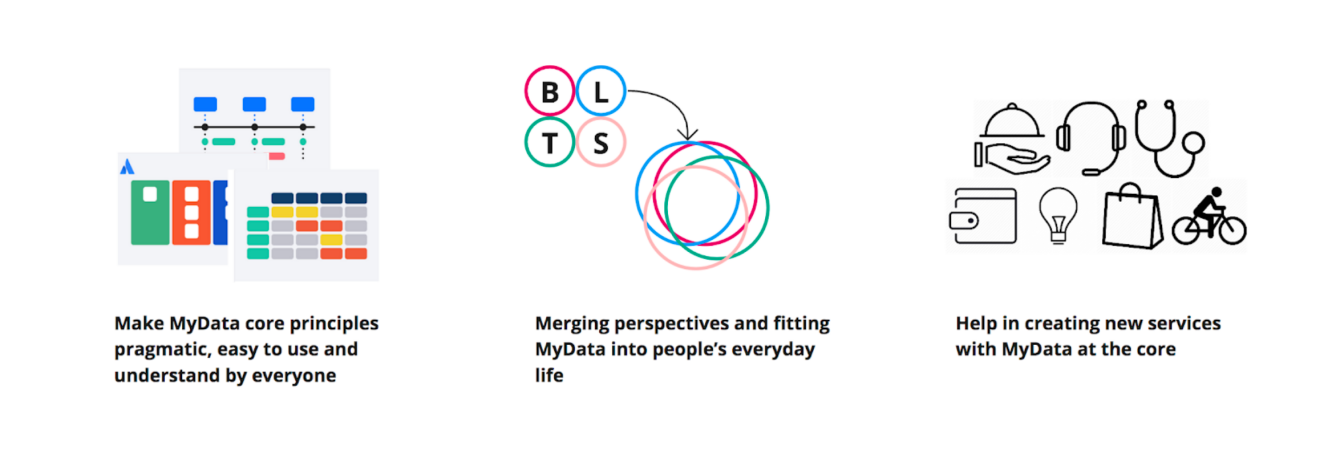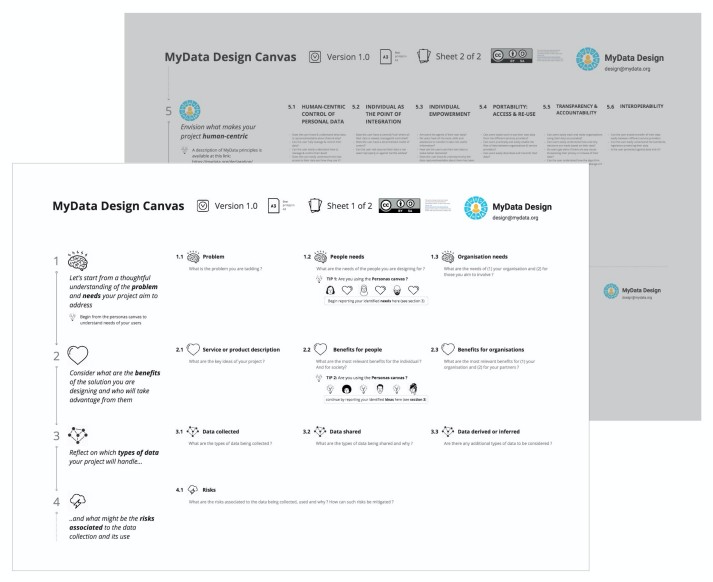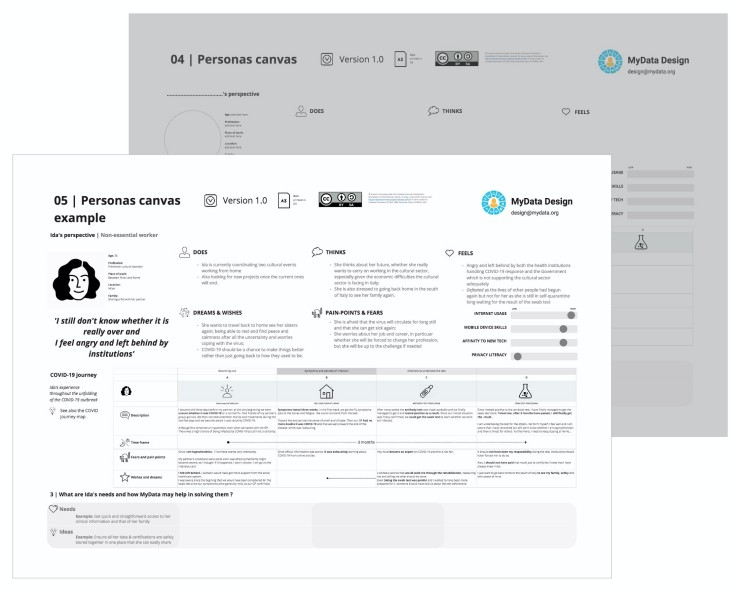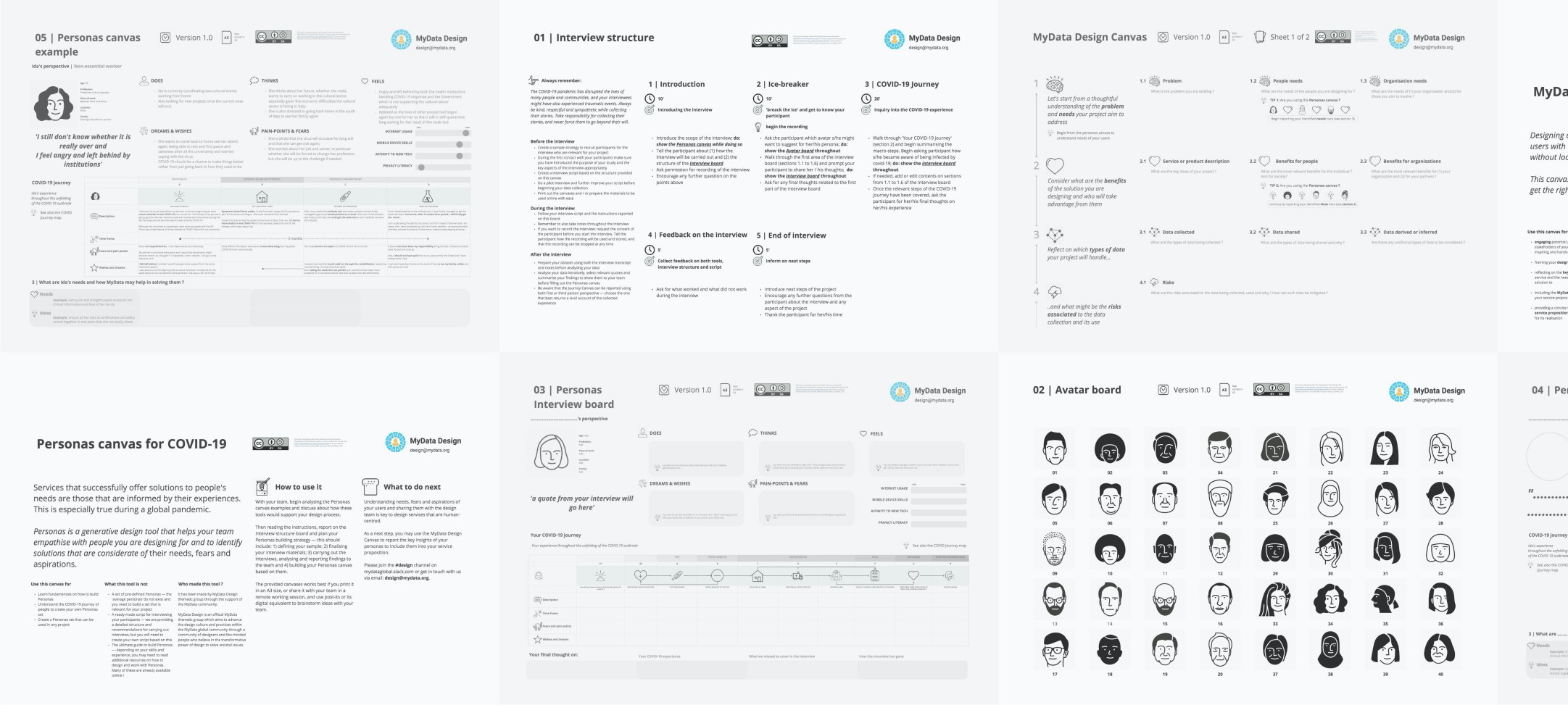Putting MyData Principles into action: An introduction to the MyData Design Toolkit
Over the last years, the global community of MyData has been developing an approach aimed at strengthening digital human rights while opening new opportunities for businesses to develop innovative new services based on personal data and mutual trust.
MyData Design was established in September 2019 to advance the design culture and practices within the MyData Global community, through a community of designers and like-minded people who believe in the transformative power of design to solve societal issues.
Goals of MyData Design
Since its establishment, the work of MyData Design strives to fit into three main directions:

- Make MyData core principles pragmatic, easy to use and understood by everyone. MyData principles, outlined in the MyData Declaration represent a live embodiment of the values that drive the actions of the MyData community. However, to support the shift toward a human-centric approach to personal data, it is key to turn leading principles into actionable forms. Such as guidelines, recommendations, best practices, patterns and case studies that can be replicated, used and further improved through a trial and error approach.
…it is key to turn leading principles into actionable forms.
- Merging perspectives and fitting MyData into people’s everyday life. The MyData community has revolved around four main drivers called BLTS perspectives (business, legal, technology and society). As the community of MyData is growing worldwide, there are several valuable initiatives taking place across the globe that fit one or more of these perspectives. However, in the real-life context boundaries among perspectives are indeed blurred and deeply intertwined. Therefore, to deliver services that have MyData at their core, designers need to act as the glue that keeps these layers together and to facilitate the co-design of solutions with all stakeholders.
…designers need to act as the glue that keeps these layers together and to facilitate the co-design of solutions with all stakeholders.
- Support the creation of new services with MyData at the core. Finally, as a group of designers and like-minded people, we want to inspire actions to build better services that serve both, the individuals as well as the society. How would healthcare, mobility, banking, travelling just to name a few, look like when personal data in full control of individuals? This is one among the most cogent and exciting challenges which stand at the very core of MyData Design and inspires its actions.
…we want to inspire actions to build better services that serve both, the individuals as well as the society.
Introducing the MyData Design Toolkit
During its first year of activities, MyData Design has undertaken an open community-led design project that seeks to take a design-oriented approach to turn MyData principles into action. The MyData Design Toolkit, which represents the outcome of such endeavour, contains two distinct and yet complementary tools:
- The MyData Design Canvas. This generative design tool aims to help teams articulate the value proposition and the description of a concept, solution or use case. It has been designed to engage partners and stakeholders to frame the design challenge according to the human-centred design perspective set out by MyData, reflect on the key aspects of the service and the potential solutions and directions to be made.
…aims to help teams articulate the value proposition and the description of a concept, solution or use case.

- The Personas Canvas for COVID-19. This collection of tools has been developed originally as part of the MyData community effort to tackle the spread of the global pandemic, by supporting and envisioning solutions that are both effective and aligned with the core principles of MyData.
…to tackle the spread of the global pandemic…

A number of design and evaluation tasks were undertaken to design the toolkit: first, a review of design tools with a similar finality was carried out to inform the community design sessions. The outcome of these sessions was the first draft of the toolkit which was tested on a first workshop setting with several members from the MyData community attending the online session from Europe, Australia, US and Korea.
The data coming from both observation and the feedback of attendees were analysed and used to further improve the toolkit. A second test workshop which used the Design toolkit was run in August 2020 and led by the City of Helsinki service design team. The workshop was open to city managers and public servants from several Finnish cities involved in the National Digitisation Programme. Feedback from this second workshop was collected and further analysed to be used in the current and the future release of the Design toolkit.
Currently, the MyData Design toolkit is being used byMyData-4-Pandemics thematic group as part of their effort to design the specification for a MyData human-centric data platform for COVID-19. This platform is meant to leverage data coming from multiple data sources and transformed into an interoperable format, used as the basis of analytics needed for tackling the COVID19 crisis on society and community levels. In this regard, the design toolkit is being used to enhance the human-centeredness of the platform. In particular, the group is leveraging Personas to understand pandemics from a citizen point of view and their readiness to share personal data. It is used to plan and conduct interviews and create a personas set that can support the design of decision-making for the platform’s specifications
MyData Design is actively supporting this initiative providing further advice on the design research actions.
The MyData Design Toolkit is licensed under Creative Common BY-SA, everyone is welcome to use, adapt and to improve the toolkit.
Download the MyData Design Toolkit V1.0
Please join the #design channel on mydataglobal.slack.com or get in touch with MyData Design via email: design@mydata.org, for any further information about the toolkit. Also, let us know your valuable feedback and experience using the toolkit, as that is key to improve the future release of the toolkit.
Author

Alessandro Carelli
MyData Design initiator;
Sr. Service and UX designer @ Tangity —
part of NTT DATA Design Network; PhD


Pingback : Edição de 02/10/2020 – My Data Brasil